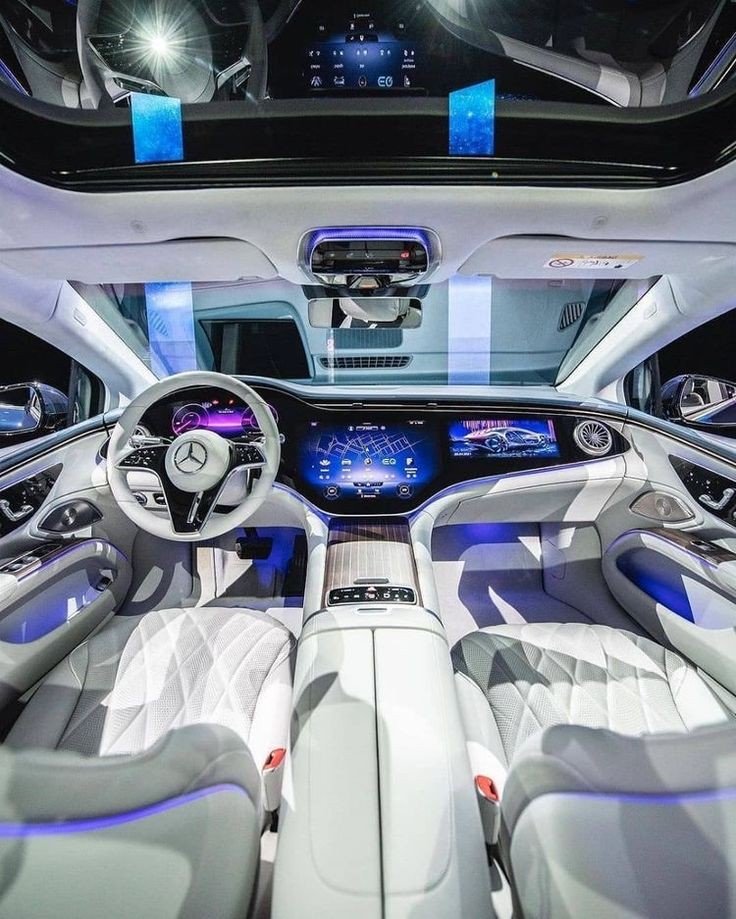
Artificial intelligence (AI) has become a transformative force in many industries, and the automotive sector is no exception. In recent years, AI has played an increasingly important role in enhancing vehicle safety, making cars smarter, more responsive, and better equipped to protect passengers and pedestrians alike. This article explores how AI is integrated into modern car safety systems, the benefits it brings, and the future implications for road safety.
Understanding AI in Automotive Safety
What is AI in Automotive Context?
AI in the automotive context refers to the use of machine learning, neural networks, and other forms of artificial intelligence to process data, make decisions, and control various functions within a vehicle. These AI systems can learn from data, recognize patterns, and make real-time decisions to enhance vehicle performance, including safety features.
The Evolution of Car Safety Systems
Traditional car safety systems, such as seat belts, airbags, and anti-lock braking systems (ABS), have been crucial in protecting passengers during accidents. However, these passive safety systems are reactive, designed to mitigate injury after a crash has already occurred. The advent of AI has enabled the development of active safety systems that can predict and prevent accidents before they happen.
Key AI-Driven Safety Features
Advanced Driver Assistance Systems (ADAS)
One of the most significant applications of AI in car safety is in Advanced Driver Assistance Systems (ADAS). These systems use AI algorithms to process data from sensors, cameras, and radars to assist drivers in making safer decisions on the road.
– Automatic Emergency Braking (AEB): AI-powered AEB systems can detect potential collisions with vehicles, pedestrians, or other obstacles. When a collision is imminent, the system automatically applies the brakes to prevent or reduce the severity of the impact.
– Lane Departure Warning and Lane Keeping Assist: These systems use AI to monitor the vehicle’s position within the lane. If the car begins to drift out of its lane without signaling, the system alerts the driver and can even make small steering corrections to keep the vehicle on course.
– Adaptive Cruise Control (ACC): AI enhances traditional cruise control by allowing the system to automatically adjust the vehicle’s speed to maintain a safe following distance from the car ahead. ACC uses AI to predict traffic flow and adapt to changing conditions in real-time.
Collision Avoidance Systems
AI plays a critical role in collision avoidance systems, which are designed to detect and respond to potential hazards on the road.
– Forward Collision Warning (FCW): This system uses AI to analyze data from the car’s sensors and cameras to detect when a vehicle or obstacle is too close. The system then warns the driver, giving them time to take corrective action.
– Blind Spot Detection: AI-driven sensors monitor the areas around the vehicle that are not visible to the driver. If another vehicle enters the blind spot, the system alerts the driver to avoid a collision during lane changes.
– Pedestrian Detection: AI enables the vehicle to recognize pedestrians in or near the roadway. The system can distinguish between objects and humans, and if a pedestrian is detected, it can trigger alerts or apply emergency braking.
Driver Monitoring Systems
AI is also used to monitor the driver’s behavior and condition, ensuring they remain attentive and capable of safely operating the vehicle.
– Drowsiness Detection: AI systems analyze the driver’s eye movements, head position, and other physiological indicators to detect signs of drowsiness. If the system determines that the driver is becoming fatigued, it will issue a warning or suggest taking a break.
– Driver Attention Monitoring: By using cameras and AI algorithms, the system can detect if the driver is distracted, such as looking away from the road or engaging with a mobile device. The system can issue warnings to refocus the driver’s attention on the road.
AI-Powered Autonomous Driving
The ultimate goal of AI in automotive safety is to enable fully autonomous driving. While fully self-driving cars are still in development, AI already powers semi-autonomous features that enhance safety.
– Traffic Sign Recognition: AI systems can recognize and interpret traffic signs, such as speed limits, stop signs, and yield signs. This information is used to adjust the vehicle’s speed and behavior accordingly.
– Autonomous Emergency Steering: In situations where braking alone isn’t enough to avoid a collision, AI can assist with steering to safely maneuver the vehicle around an obstacle.
– Environmental Awareness: AI-driven systems continuously monitor the vehicle’s surroundings, including other vehicles, pedestrians, cyclists, and road conditions. This high level of environmental awareness is crucial for the development of autonomous vehicles that can safely navigate complex traffic scenarios.
Benefits of AI in Car Safety
Reduced Human Error
Human error is a leading cause of traffic accidents. AI-driven safety systems help reduce the likelihood of accidents by assisting drivers in making better decisions and by intervening when necessary. Features like AEB, lane-keeping assist, and adaptive cruise control can compensate for momentary lapses in attention, ultimately reducing the risk of collisions.
Enhanced Reaction Times
AI systems can process vast amounts of data and make decisions much faster than a human driver. This quick reaction time is especially important in emergency situations, where milliseconds can mean the difference between avoiding an accident and a serious collision.
Continuous Learning and Improvement
AI systems can learn from real-world driving data, allowing them to improve over time. As more vehicles equipped with AI safety features hit the road, these systems will become more refined, leading to even greater levels of safety.
Increased Vehicle Autonomy
AI is paving the way for higher levels of vehicle autonomy, where cars can take over more driving tasks from humans. Even in partially autonomous systems, AI can handle complex driving scenarios that would be challenging for a human driver, such as navigating in heavy traffic or during inclement weather.
Challenges and Considerations
Reliability and Trust
For AI-driven safety systems to be effective, they must be reliable and trustworthy. Any malfunction or misinterpretation of data could lead to accidents, which is why extensive testing and validation are critical. Building public trust in these systems is also essential for widespread adoption.
Ethical Dilemmas
AI in car safety systems must also navigate ethical dilemmas, such as making decisions in scenarios where harm is unavoidable. For example, if an accident cannot be avoided, how should the AI prioritize the safety of the driver, passengers, pedestrians, or other vehicles? These ethical considerations are complex and require careful thought in the design and programming of AI systems.
Cybersecurity Risks
As vehicles become more connected and reliant on AI, they also become more vulnerable to cyberattacks. Protecting AI systems from hacking and ensuring data privacy are critical concerns that automakers must address as they continue to integrate AI into their safety features.
The Future of AI in Car Safety
Advancements in AI Technology
The future of AI in car safety will be marked by continuous advancements in technology. We can expect AI systems to become more sophisticated, with better predictive capabilities, improved decision-making algorithms, and greater integration with other vehicle systems.
Widespread Adoption of Autonomous Vehicles
As AI technology matures, the automotive industry is likely to see a gradual shift towards fully autonomous vehicles. These vehicles will rely heavily on AI to navigate roads safely, interact with other road users, and handle complex driving scenarios without human intervention.
Improved Safety Standards
Regulatory bodies are already beginning to recognize the potential of AI in improving vehicle safety. As AI-driven safety features become more common, we can expect to see updates to safety standards and regulations that encourage the adoption of these technologies and ensure their effectiveness.
Conclusion
AI is revolutionizing car safety systems, making vehicles smarter, safer, and more capable of preventing accidents before they occur. From advanced driver assistance systems to the development of fully autonomous vehicles, AI is playing a central role in shaping the future of road safety. While challenges remain, the benefits of AI in reducing human error, improving reaction times, and enhancing overall vehicle safety are undeniable. As AI continues to evolve, it will undoubtedly lead to safer roads and a reduction in traffic-related injuries and fatalities.
ALSO READ: The Future of Autonomous Driving | Where Are We Headed?







